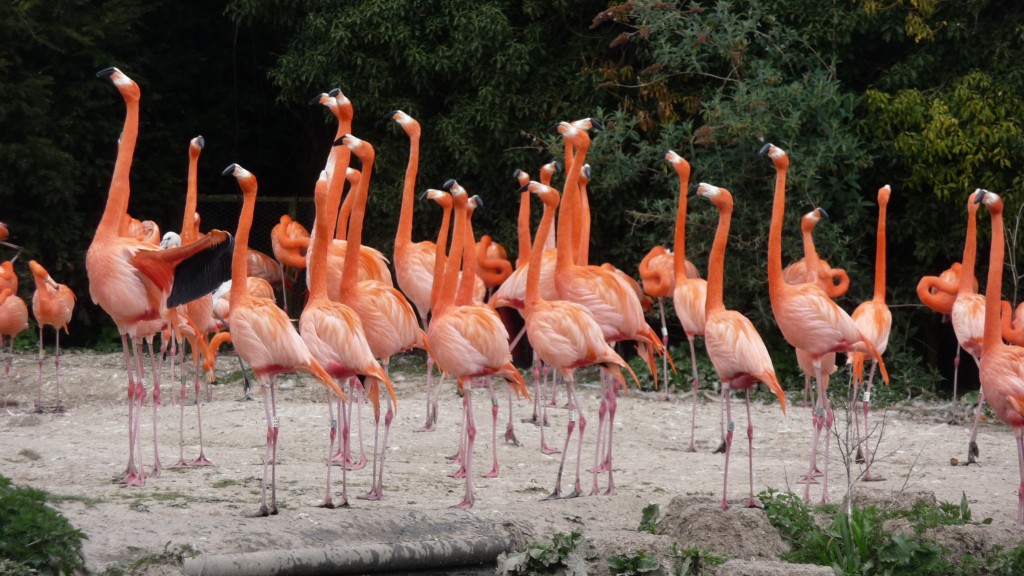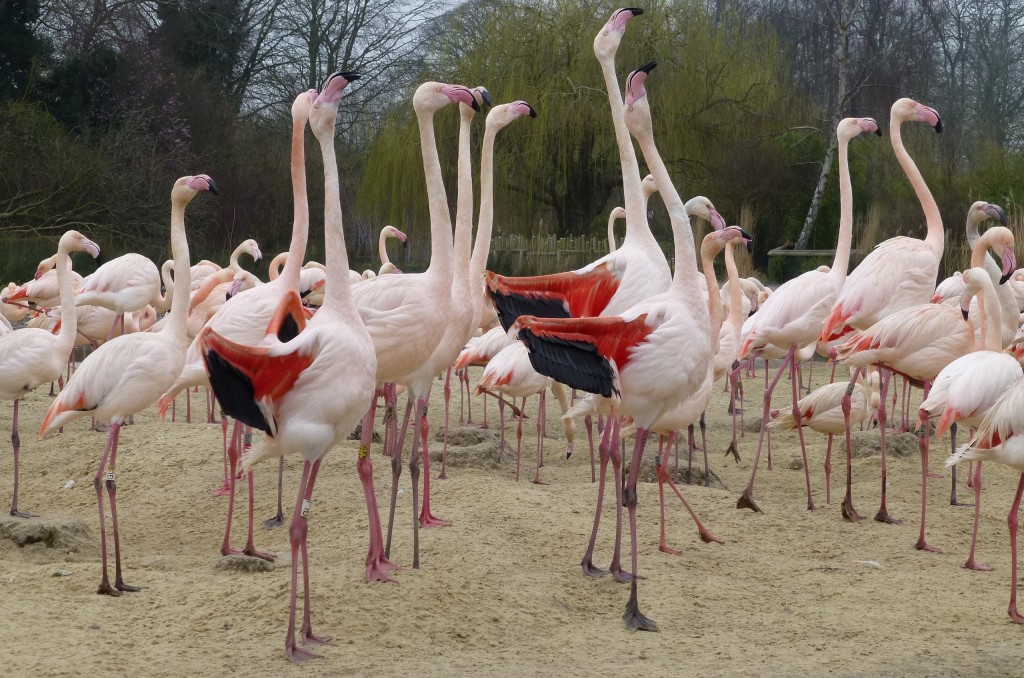Flamingo breeding activity; a few insights (3)
[yframe url='http://www.youtube.com/watch?v=yuG3RvgnYMs']
Digging around in old scientific papers can be a really rewarding exercise. I am no biochemist or expert on pigmentation, but recently I took part in some filming of the birds at WWT Slimbridge and was being asked about the overall importance of colour to flamingo display. So I needed to swot up. Is it all visual? Or is sound and movement involved as well? Sounds a bit like a scene from the Royal Ballet perhaps?! Having been required to look up some details on how flamingos actually get their colours, I have learnt a lot about the pinkness that makes flamingos so distinctive and just how specific this is to different species.
One of the most interesting things that I have discovered is that the relatedness between different types of flamingo can be evaluated by the colour of the plumage. By this I mean that the more primitive (ancestral) the flamingo, the more uniform its pinkness is. And this is best illustrated by comparing two closely related species; the Caribbean flamingo and the greater flamingo.
Until 2002, these two birds were not considered separate species but simply different forms (termed "subspecies") of the same kind of flamingo. This illustrates how similar they are in terms of size, shape, behaviour and overall appearance. However, where these two animals differ markedly is in their feather colour. The Caribbean flamingo is a favourite amongst WWT visitors for giving a blast of shocking pink on even the dullest of days. The greater flamingo, dare I say this (...?) could be described as a little disappointing in terms of "X Factor pinkness" as it's mainly white. Or is it?
The courtship ritual of the greater and Caribbean flamingo largely follows the same basic plan. The birds begin head-flagging, then they do lots of wing-saluting and the odd twist-preen and, if the mood takes them, they might all stampede around and march. But the Caribbean flamingo is actually working hard in its display to produce the same message that the greater flamingo tells using the same dance. Why? Because evolution has made the greater flamingo's display more impressive as it can give more of a contrast in colour and produce more of a "wow, how cool is that?!" effect by having a plain white background. It's almost like if evolution was a committee, it has sat down and said "you know those Caribbean flamingos? Well they look really cool but they are just too pink to create the most amazing display that a flamingo can. What we'll do next time is make a white flamingo with REALLY bright bits so that when it displays everyone will notice." And voila, so the greater flamingo lacks the overall brightness of the Caribbean flamingo but can do an even sexier flamingo dance.


So what does this mean? Basically, the displays that flamingos perform are called "honest signals". This is posh science speak that describes whether or not an animal's visual appearance is actually a reflection of its true nature. So in this case, the birds' colour, size and statue is a true reflection of their overall genetic quality and physical fitness. If you are a flamingo and you can be pink enough, you can flash open your wings enough times and you can dance until you drop, you are more likely to find a partner. Birds that are not able to walk-the-walk and cannot show off so much, won't be as likely to find a mate. And thus the reason for the bird's amazing mating ritual and why they are pink in all different places. Isn't science fun?!


